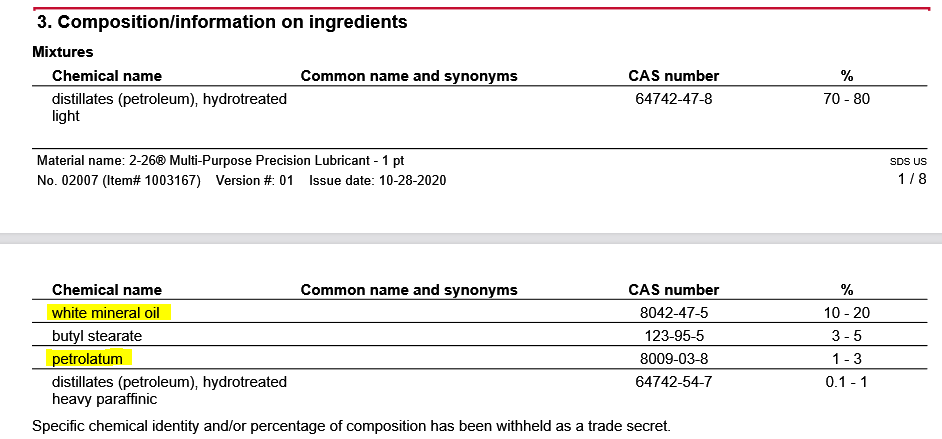Well - I repeated the cleaning process of the metal sideframes and the square bronze bushings/bearings except that I used CRC 2-26 which is billed as a "lubricant helps prevent electrical malfunctions and restore damaged equipment caused by water penetration, humidity, condensation and corrosion."
There are literally hundreds, if not thousands, of personal recommendations for CRC 2-26 and its use on electrical equipment and the associated Before & After results. I think I'm chasing a red-herring. I'm of the opinion its something else but I fail to see what that might be.
I have proven to myself that it's not a short, because I wired an LED across the tracks and it stays on/lit when the loco intermittently stops/starts.
All connections are tight sound.
The LM-3S appears to be HIGHLY sensitive to even the slightest loss of electrical continuity.
Gahhhh!
You repeated the exercise with another brand of essentially the same stuff. The 2-26 SDS bears this out. Different results shouldn't be expected.

Since I was already at the bench working on my helix electronics today I decided to do a little test for us.
I setup two pieces (~ 10' each) of 22AWG solid copper wire with bare ends crossing at 90 degrees on one end and my multimeter attached to the other end. Everything was taped down to the bench so nothing moved. A weight (3/4" hex nut) was taped such that I could raise and lower it to hold the bare wire ends together at a repeatable pressure. The bare ends were lightly abraded with 600g and cleaned with contact cleaner.
The initial measurement of the circuit was ~0.5Ω. I pressed down slightly on the nut. The measurement did not change. The ~0.5Ω resistance was not the contact point resistance but rather the wire and multimeter connections to it so 0.5 became the baseline.
I wiped the wires with a WD40 saturated Qtip. The resistance increased to ~0.9Ω. I then used the dry end of the Qtip to wipe off the WD40. The resistance was ~0.6Ω. I then cleaned the wires with contact cleaner. The contact resistance returned to the original 0.5Ω. I repeated the test three times and got equivalent results each time. Clearly WD40, especially when wet, introduces resistance into the circuit however, that resistance is very small.
Now, had I started with badly fouled wire ends with potentially thousands of ohms of resistance and hit them with WD40 it would be a different story. The WD40 could potentially reduce the resistance a thousandfold. I suspect this is the case with the anecdotal evidence you find on the web. That and WD40's well established moisture displacement electrical fixes. Old timers like me remember drying out wet distributor caps with WD40. But we know your problem is not moisture related.
Let's put the test observations into LM3 perspective. Assume 15v at the LM3 and power transmitted through a single wheel set. We have 0.2 ohms of WD40 added resistance to the circuit. Ohm's law tells us the voltage at the LM3 will be a mere 0.04v less or 14.96v. Obviously WD40 is not the problem.
I was right that WD40 leaves a film and that film has resistance. I was wrong about the amount of resistance in the film. It is a red herring. My apologies. At least we know for certain now.
In my defense, the test also showed the superiority of contact cleaner over WD40 for cleaning bare metal.